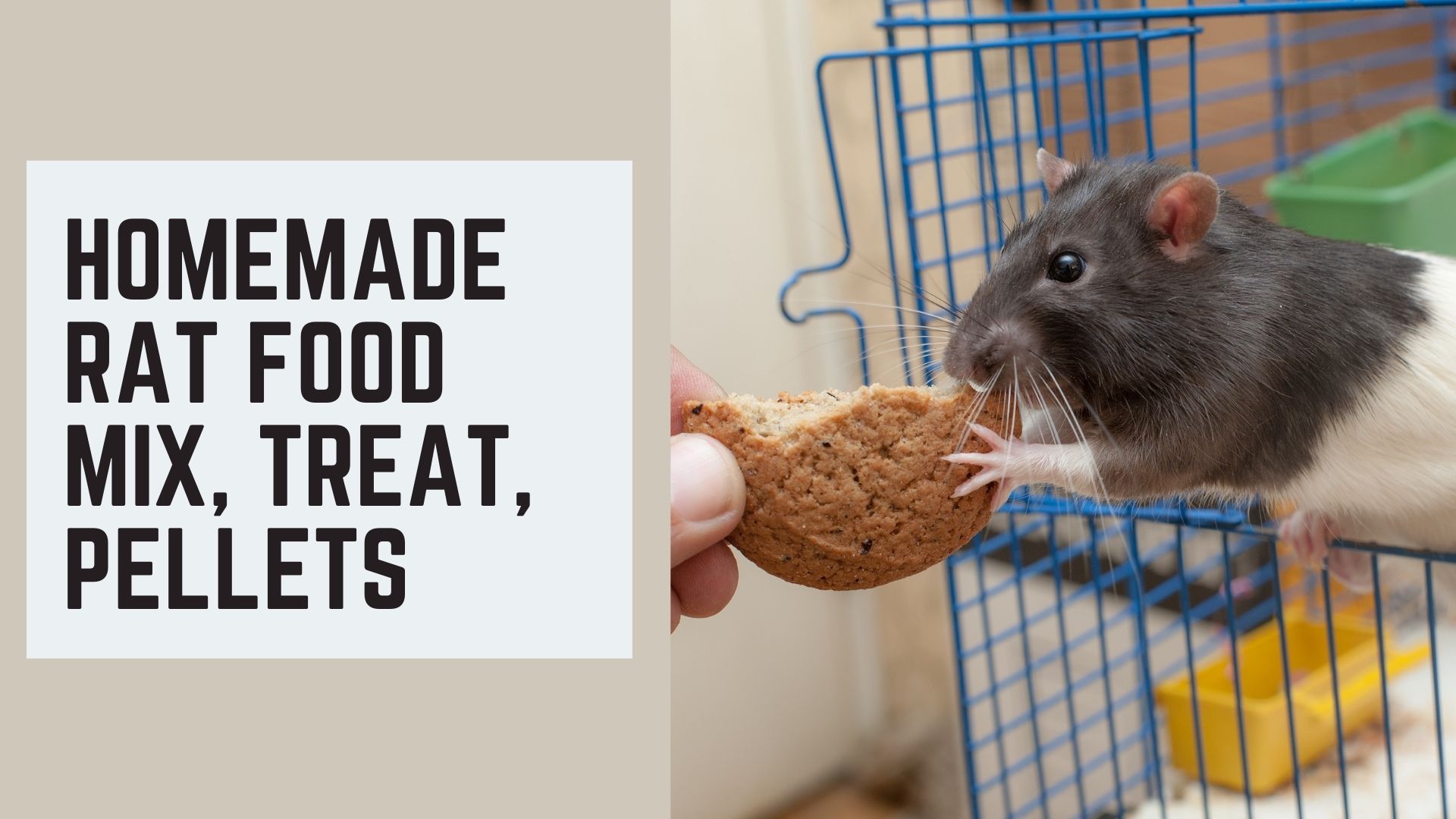One of the most important things to us is the health of our rats. Since pet rats already have such short life spans, we try to give them every advantage by providing them with a healthy, well-rounded diet.
It has been found that most pet store foods labeled as “Rat Food” are too rich in protein and fat for our beloved creatures. Too much protein and fat can lead to tumors, obesity, and heart problems.
For this reason, we make our own homemade rat mix, a variation of the Suebee Rat Diet, along with daily fruits and vegetables.
Keep in mind that not all foods are safe for rats. Check out the list of Forbidden Foods listed in Debbie Ducommun’s Rat Health Care Guide, 7th edition 2001.
Homemade Rat Food Mix
The ingredients listed in our mixture can be found at most grocery stores, costs roughly $10, and feeds our large rat family for about 1 month.
Please keep in mind that we care for many rats and that these amounts should be adjusted proportionally to the number of rats you are planning to feed.
Also, to keep things interesting for the rats we often try new ingredients in the mix and encourage you to do the same. After all, we wouldn’t want to eat the same thing day in and day out, would we?
- 1 lb Cooked Unsalted Soy Nuts
- 1 lb Dry Pasta (tri-color, multi-flavor)
- 1 lb Dry Fruit (variety of dried banana, mango, cherry, cranberry, etc)
- 1 lb Dry Veggie (variety of dried split peas, carrots, etc)
- 1/2 lb Unsalted Sunflower Seeds in the shell
- 1/2 lb Cooked Unsalted Peanuts in the shell
- 1/2 lb Muesli Mix
- 1 lb Dry Rolled Oats
- 10 oz Puffed Wheat Cereal
- 10 oz Puffed Rice Cereal
- 1.5 lbs Bran Flakes
- 2 lbs Lab Blocks (available at most pet stores)
Lab Blocks
Lab BlocksLab blocks are created as a complete nutritional source and if you must choose one thing to feed your rats, this is what I would recommend.
That being said, I highly encourage you to also add fresh fruits, veggies and treats to spice up your rat food dish. They will be happier and healthier for it! You can find lab blocks at most pet stores or you can buy them online.
Fruits & Vegetables
Some of the fresh fruits & veggies we give our rats I always recommend giving your rats fruits and vegetables. Of course, fresh is best, but in a pinch, frozen fruits and veggies will work just fine.
In fact, my rats get a kick out of having these special icy desserts in the heat of summer.
Don’t be afraid to have fun with it either. Try filling up a shallow pan with water and throw in some frozen peas and corn.
Watch as your rats dive for goodies, then scamper off to munch on them. Or cook up some corn on the cob and watch them go wild eating it right off the ear.
Some of our rat’s favorite fruits & vegetables are
- watermelon,
- cantaloupe,
- spinach,
- peas,
- corn,
- carrots,
- apples,
- zucchini,
- bell peppers,
- peaches,
- blueberries,
- strawberries,
- and bananas.
Keep in mind that not all foods are safe for rats. Check out the list of Forbidden Foods before giving your rats any fruits or vegetables.
Treats
A favorite treat is a wonderful way to bond with your rats is by sharing your meals with them and giving them special treats.
We love to have a nibble of our scrambled eggs in the morning or a nip of our turkey sandwich for lunch. Be careful though, they’ve been known to hop right in a bowl of stew at dinnertime.
A variety of nuts Another fun treat for rats is giving them nuts still in their shells. They love the challenge of working for their prize and the shells are great for wearing down those big rats’ teeth!
In Summary
Keep in mind that not all foods are safe for rats. Check out the list of Forbidden Foods before sharing it with your rats.




